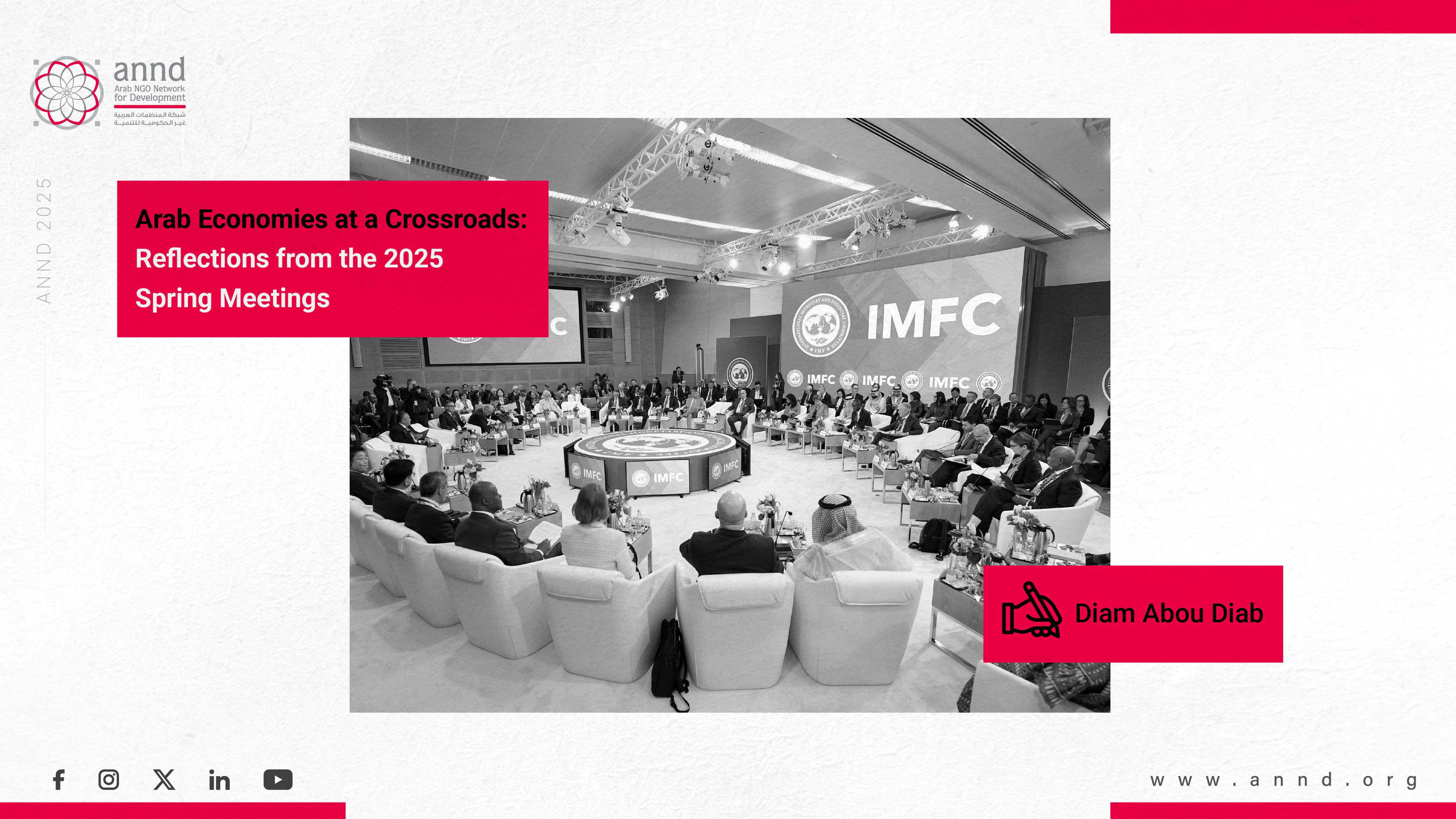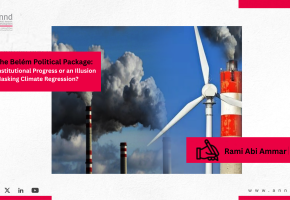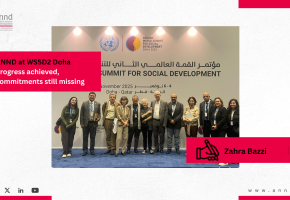
Arab Economies at a Crossroads: Reflections from the 2025 Spring Meetings - Diam Abou Diab

Arab Economies at a Crossroads: Reflections from the 2025 Spring Meetings - Diam Abou Diab
Introduction: A Heated Spring in Washington, D.C.
The Bretton Woods Institutions held their 2025 Spring Meetings in Washington, D.C. amid an exceptional year of heightened global economic uncertainty, ongoing geopolitical tensions, and pressing development challenges. In ordinary times, these international meetings aim to set the global economic and financial agenda, and to convene public officials, private stakeholders, civil society representatives, and academics to discuss the state issues of international concern, such as economic growth, sustainable development, poverty alleviation, and inequality reduction.
However, this year brought a twist. Rather than providing a unique space for discussing economic policymaking, the 2025 forum pivoted toward mitigation measures amid increased fears for the resilience of the current multilateral system. Discussions in formal and informal channels revolved around the newly emerging global challenges, swept with uncertainties, severe debt crises, shifting political realities, and possibly new economic models.
Regional Backdrop
The 2025 Spring Meetings of the International Monetary Fund (IMF) and World Bank Group (WBG) unfolded against a backdrop of revised global growth forecasts. The IMF had noted a slowdown and persistent inflationary pressures in some regions. In the Middle East and North Africa (MENA), ongoing conflicts and increased political instability have caused severe human and economic costs, resulting in a regional growth of 1.8 percent in 2024. Moreover, the IMF has lowered its growth forecasts for the region to 2.6 percent in 2025 and 3.4 percent in 2026. These projections are subject to massive risks and uncertainties, including trade tension, geopolitical conflicts, climate shocks, and a reduction in official development assistance (ODA).
As a result, MENA countries are encouraged to adapt to new environments by adopting more agile policy responses that safeguard macroeconomic and financial stability in the short term while pursuing long-term structural reforms to "enhance governance, invest in human capital, advance digitalization, and foster a dynamic private sector."[1]
MENA’s Highlights at the Spring Meetings
Perhaps the most notable highlight of the Spring Meetings was Syria’s historic return to the global stage. For the first time in 20 years, Syrian officials attended the meetings. During the high-level Syria roundtable, they engaged with both institutions in formal discussions around Syria’s reconstruction and rebuilding of its economy and institutions. Notably, Saudi Arabia has pledged to pay off Syria’s roughly $15 million debt to the WBG, paving the way for potential negotiations on new loans and grants.[2] The decision to welcome back Syria into the multilateral system was further underscored by the appointment of the IMF’s first mission chief to Syria in 14 years.[3]
With its sizable official delegation and "unified reform vision," Lebanon also took center stage during the Spring Meetings. The talks followed the IMF’s fact-finding mission to the country in March 2025 and emphasized the need for a "comprehensive strategy for economic rehabilitation" focused on fiscal and debt sustainability, social safety nets, financial sector restructuring, and governance improvements.[4] Complementing these talks, the Minister of Finance signed in April a $250 million loan agreement with the WBG to reform the electricity sector and alleviate chronic power cuts.
Progress on Lebanon’s IMF program was not disclosed during the meetings, with further bilateral negotiations set to resume in May 2025. However, the IMF’s strict conditionality for long-awaited structural economic and financial reforms remains a prerequisite for any future disbursements. Other unofficial insights and sources suggest another layer of complication involving political and security considerations before concluding a comprehensive IMF program.
Ahead of the Spring Meetings, the IMF completed the fourth review of Egypt’s Extended Fund Facility (EFF) arrangement, enabling authorities to draw about $1.2 billion (SDR 922.87 million), bringing Egypt’s total purchases under the EFF to approximately US$3,207 million, despite a mixed progress on structural reforms.[5] Similarly, the IMF concluded the 2025 Article IV consultation with Morocco and completed the Third Review under the Resilience and Sustainability Facility (RSF) arrangement, enabling the Moroccan authorities to receive SDR 375 million (about US$ 496 million).[6]
Moreover, the IMF and Jordanian authorities reached a staff-level agreement on the third review of the authorities’ economic reform program supported by the EFF arrangement. Once approved, Jordan will access SDR 97.784 million (about $130 million) out of the approved program size of SDR 926.370 million (about US$1.2 billion).[7]
The Civil Society Policy Forum (CSPF)
In parallel with official talks, civil society organizations organized over 20 sessions to bridge grassroots perspectives with Bretton Woods policymaking. Across these forums, participants echoed common threats and concerns and called for alternative, more inclusive, and fairer economic models. Critical discussions examined the social, economic, and environmental impacts of International Financial Institutions (IFIs) programs in low and middle-income countries. They stressed the need for comprehensive social protection models, equity and inclusion, and debt and climate justice.
Conclusion: Are we on the right track?
In conclusion, the 2025 Spring Meetings highlighted the formidable challenges and emerging directions for global and national economies. While "uncertainty" has become the buzzword, the ultimate solutions lie in domestic implementation, political stability, and sustained civil-society engagement through enhanced platforms like the CSPF. As several Arab nations confront debt crises, governance reforms, and climate risks, the question remains: will these high-level commitments translate into tangible and sustainable progress on the ground?
Recent publications

The Belém Political Package: Institutional Progress or an Illusion Masking Climate Regression? - Rami Abi Ammar
